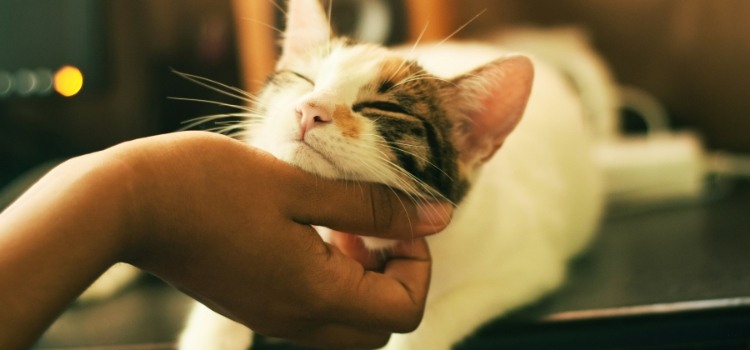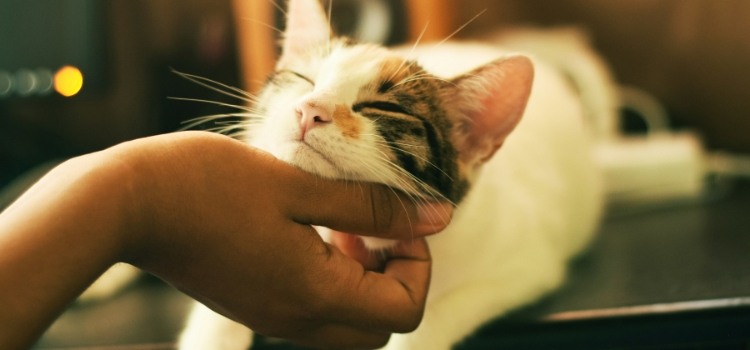As an Amazon Associate I earn from qualifying purchases.
Cats are mysterious animals, with behaviors that often appear to be coded messages requiring human decoding. What is the unspoken translation behind your feline friend leaning in for a gentle headbutt, also known as ‘bunting’? It’s an interesting topic for both new and long-time cat owners. This detailed exploration will help us understand the various layers of behavior related to headbutting in cats better.

Feline Communication: The Basics
Before we get into headbutting specifics, it is crucial to lay a foundation for communication among cats. Much of how cats communicate with each other is done through body movements. Tail position, ear movement, and vocalizations- all these act as tools that enable them to convey their needs, feelings, and intentions.
Being mostly solitary predators, cats have evolved ways of communicating that minimize physical contact while maximizing information transmission. These non-verbal cues are what normally leave non-cat people confused – pun intended.
Cat Headbutting vs Head Pressing
It is important to distinguish between headbutting and head pressing because they are two different actions despite both involving the use of the head by a cat. Bunting or Head butting is a deliberate move where a cat gently pushes or rubs its face against you or another cat. This action usually carries no harmful intent; rather it expresses affection from kitty to humans or other fellow kitties. On the other hand, persistent pressing of the head against hard surfaces is called “head pressing” which usually indicates some kind of ailment in most cases.
Finding out why cats communicate this way can be difficult when viewed alone because there are generally no universal “cat dictionaries”. Nevertheless, if your cat purrs while doing so then your cat loves you and thinks highly of him/her.
Why do Cats Headbutt?
The motive behind a cat’s decision to butt is multifaceted meaning there’s more than one explanation for this act alone. We need to understand the instincts a cat has for it to make more sense. As territorial beings, cats use scent marking as a way of differentiating regions and making them comfortable. Cats have rich scent glands on their cheeks and temples and when they headbutt an object or person they are marking that said thing with their scent.
Head butting may be performed by cats for different purposes. These include:
Marking Territory: By marking their territory, cats are creating familiar spaces which can also mean socializing someone else’s personal in a social-territorial context.
Affectionate Gesture: A cat lovingly raising its forehead against yours is not just an act of friendship but one indicating that he/she accepts you as part of his/her extended family by interchanging scents.
Seeking Comfort: Headbutting offers a soothing effect to cats because it creates natural rocking motion. This serves the purpose of spreading their calming pheromones to seek comfort from stressful situations especially.
A few reasons why cats engage in headbutting include:
Claiming Territory: By claiming territory, this behavior can make an unfamiliar environment known as space including asserting ownership over you or other things within the context of social and territoriality.
Friendly Gesture: Headbutting might also express love and trust in some instances. They connect through scent sharing by moving around your body where such transfers indicate acceptance into extended families among them.
Comfort Seekers: The rocking motion caused during a gentle head bump is very comforting to these animals naturally; other than this there will be release of soothing hormones being spread all over once again stress-related events.
Understanding the motive for headbutting is an important aspect in a cat owner. It’s a method your cat uses to communicate a variety of emotions and particular needs pronounced on its well-being and happiness.
The Meaning of Headbutting
For cats, headbutting is a multifunctional behavior that serves several purposes in their social repertoire. The importance of this act of headbutting should not be underestimated whether they are engaging in complex greeting rituals with another feline or having a tactile conversation with a human.
Thus, we shall peel away the layers of meaning from a cat’s headbutt:
Explanation of Headbutting Behavior in Cats
According to evolution, all cats have used scents to communicate with one another. By marking their environment particularly areas which they perceive as safe, there is an establishment of calmness and control. With pet cats, it is more like going back to the wild where these instincts were developed making them merge both ancient and domesticated features.
Possible Reasons Behind Headbutting
For most cats, head butting towards their favorite person becomes the usual way of interaction. Expectations for food or desiring touch while getting close to you are some reasons why a cat would head butt you among others. Oftentimes, repetition is key; if they receive positive reinforcement, cats will continue to use headbutts as a means to achieve their desired outcomes.
Interpreting Cat Headbutts
You may consider your cat’s gentle nudge against your hand or cheek a little thing but it means much more in the language of felines. Next up we’ll learn how to interpret your pet’s loving nudges so that no important message from your cat goes unnoticed by you.
Affection and Bonding
Head butting forms part of feline bonding rituals since rubbing its scent on its owner and then bumping into him/her using its head makes it feel as though “you belong”. It is an expression of trust and love meant to create stronger bonds between the owner and his/her pet.
Territory Marking
As mentioned before, scent marking plays an integral role in such an act like this one. Your cat considers you part of their world and ownership, and by marking you, they’re ensuring that, in the social hierarchy of their domestic environment, their scent is established.
Seeking Attention or Interaction
All cat owners know that cats have social preferences. That headbutt might just be a polite (and adorable) way for your cat to say “Hey!” and play with you. It’s not spoken but it sure does communicate: I want to be with you!
Understanding the goals behind your cat’s headbutting can create a more seamless and fulfilling experience for both of you. After all, it’s these small moments of connection that enrich the human-animal relationship.
Implications for Cat Owners
As a cat owner, recognizing and appropriately responding to your cat’s headbutts is paramount to nurturing a healthy and enriching connection. This section provides practical advice on engaging with your cat when they exhibits this behavior.
How to Respond to Cat Headbutts
The beauty of cat headbutting is its simplicity. Your response doesn’t need to be complex; it could simply involve reciprocating by returning the nudge gently scratching behind its ears or making appreciative murmurs. The main thing here is reacting positively and lovingly to cement what your furry friend has done.
It is also important that when your cat comes at you with his/her forehead in direct contact with yours, you maintain an open friendly body language as well as avoid sudden movement or loud noise which will make them feel safe that their message has been accepted positively.
Building a Stronger Bond with Your Feline Friend
Conclusion
To the point, when a cat headbutts you, it is much more than just a mere physical interaction. The form of communication has its origins in where your pet comes from and is an indication of their high regard for you. By comprehending what that signifies, cat owners can foster a social and emotional environment in which their feline companions thrive.
Decoding cat behavior is a continual endeavor that demands patience, watchfulness, and sensitivity. By embracing the strange but endearing ways in which our cats communicate to us we can get a glimpse of their world which is full of history and purpose. Don’t forget that with cats every bump, purr, or tail flicker has something to be understood as well as cherished.
For more insights into the enchanting world of cats and their behavior, explore our blog. If you are looking for advice on how to understand cat sounds better or demystify the enigma around “catnip frenzy” or just pondering over whether “Do Cats Have Nine Lives?” then look no further – we have all this information right here on our blog! In each conversation with your domesticated animal, you should remember that there’s always something new to learn during each interaction despite age and familiarity.
Amazon and the Amazon logo are trademarks of Amazon.com, Inc, or its affiliates.
